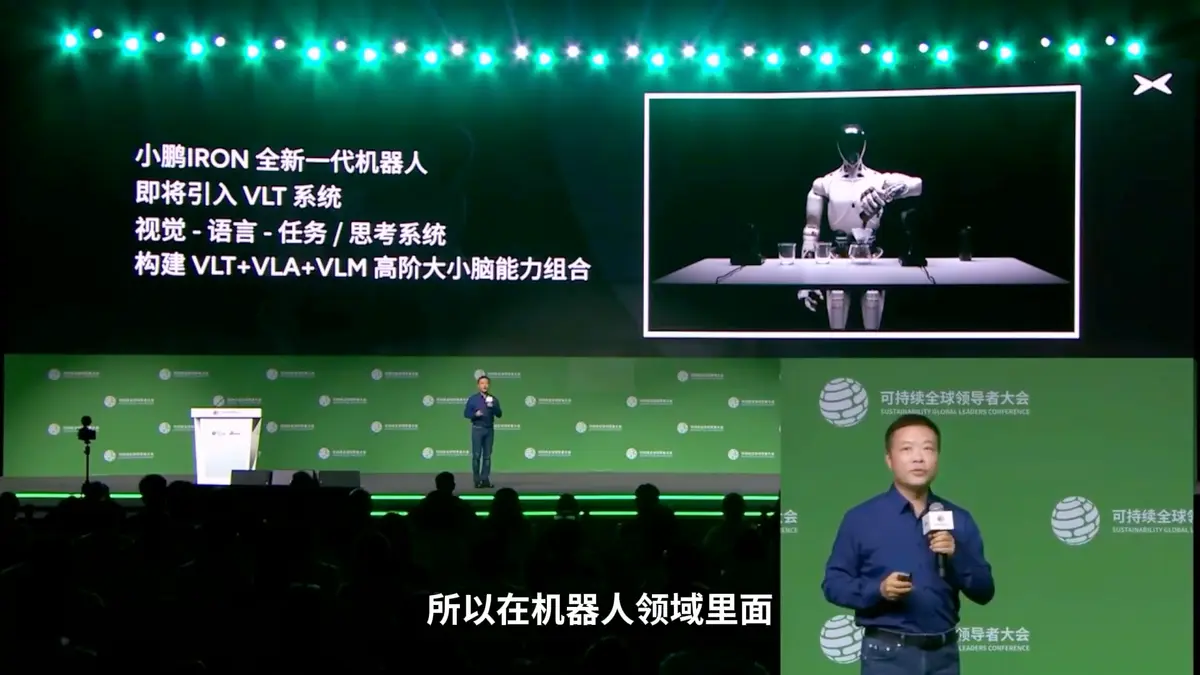- Published on
Xpeng Equips IRON Humanoid with 'VLT' AI System, Targeting Autonomy and Mass Production

Chinese electric vehicle and technology firm Xpeng is equipping its next-generation humanoid robot, IRON, with a new AI system designed to move it from a teleoperated machine to an autonomous agent. In a speech at the 2025 Sustainable Global Leaders Conference on October 16, Chairman and CEO He Xiaopeng revealed the robot will be powered by a "Vision-Language-Task/Thinking" (VLT) system, with a formal unveiling planned for the company's Tech Day in November.
The announcement signals Xpeng's deepening commitment to robotics and places its strategy squarely in line with a global trend toward developing sophisticated, multi-modal AI models as the "brains" for general-purpose robots.
From Commands to 'Thinking'
According to He, the VLT system is designed to process visual and language inputs to directly generate a task system. He added that the long-term goal is for this capability to "evolve into thinking."
This new system is part of a larger, more complex architecture that Xpeng is building. He described a "VLT+VLA+VLM high-level cerebellum and cerebrum capability combination" composed of more than five operating systems. "Only in this way can we truly transform the current remote-controlled robots into autonomous robots," He stated, highlighting the strategic pivot toward genuine autonomy.
This multi-model approach, separating high-level reasoning from low-level action, echoes strategies seen elsewhere in the industry. It is conceptually similar to Google DeepMind's recent Gemini 1.5 robotics framework, which uses one model for embodied reasoning and another vision-language-action (VLA) model for execution.

A Familiar Playbook
Xpeng's strategy of leveraging its expertise in automotive AI for its humanoid program draws a direct parallel to its biggest rival, Tesla. He Xiaopeng noted that, alongside the robotics work, Xpeng is also testing a new generation VLA model for its autonomous driving systems. This mirrors Tesla's stated ambition to unify the AI models for its self-driving vehicles and its Optimus robot, betting that a single, powerful AI foundation can master navigation and interaction in the physical world, whether on four wheels or two legs.
The focus on vision-language-action models is now an industry standard. Robotics firms like Figure AI with its Helix model and 1X with Redwood AI are all developing their own VLA systems to enable robots to understand and perform complex, language-driven tasks in unstructured environments.
The Path to Commercialization
Xpeng's ambitions extend beyond research and development. He Xiaopeng predicted that humanoid robots will bring "truly huge changes to many industries globally in the next 2 to 5 years." This timeline suggests a push toward commercial deployment around 2027-2030. Reports indicate the company has been securing key patents for robot design and posture generation, building a foundation for a serious commercial play.
While full technical specifications of the VLT system remain under wraps, the announcement solidifies Xpeng's position as a serious contender in the humanoid race. The upcoming November Tech Day will be closely watched for further details on how the company's "thinking" AI will translate from a high-level concept into tangible robotic capabilities.
Share this article
Stay Ahead in Humanoid Robotics
Get the latest developments, breakthroughs, and insights in humanoid robotics — delivered straight to your inbox.